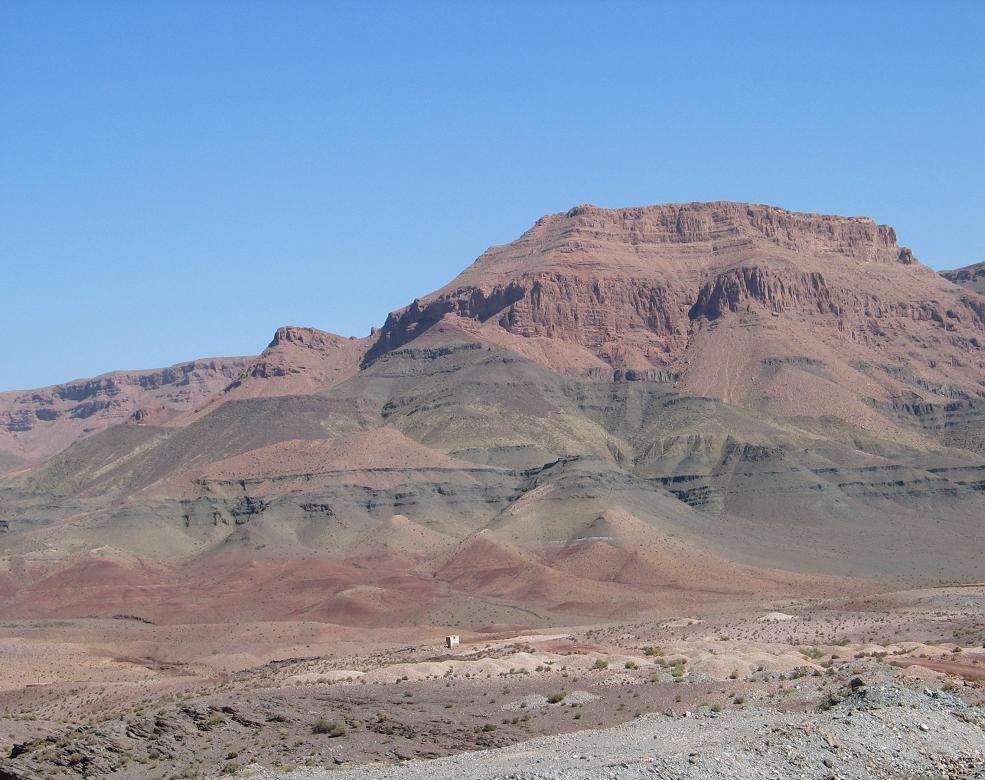Feature Image: Outcrop of volcanic rock associated with the Central Atlantic Magmatic Province. This Large Igneous Province has a strong correlation to the onset of a mass extinction ~200 million years ago, however, an exact mechanism for the extinction has been difficult to determine. CC BY-SA 4.0, via Wikimedia Commons
Paper: Two-pronged kill mechanism at the end-Triassic mass extinction
Authors: Calum P. Fox; Jessica H. Whiteside; Paul E. Olsen; Xingquian Cui; Roger E. Summons; Kliti Grice
Journal: Geology
A recent study by Calum Fox and colleagues sheds light on what caused one of the “big five” mass extinctions on Earth since complex life emerged ~540 million years ago. They found that repeated pulses of volcanic activity were responsible for the extinction in two main ways: ocean poisoning caused by gaseous hydrogen sulfide (H2S) rising through the water column (known as euxinia) and ocean acidification.
About 200 million years ago, towards the end of the Triassic, a mass extinction eradicated 76% of the species on Earth. This was one of the “big five” and sandwiched between two more well-known mass extinctions; the “Great Dying” at the end-Permian (the largest of the five), and the asteroid impact that wiped out the dinosaurs ~65 million years ago. However, despite it being so deadly, the end-Triassic event has not been as widely studied, and an exact causal mechanism has been unclear. It does, however, appear to have much in common with the preceding mass extinction.
Previous studies have revealed that in the late Triassic period the planet was rapidly warming, rock weathering rates were higher, and ocean acidification was taking place alongside large-scale changes to the global carbon cycle. In addition, a large igneous province, or an enormous outpouring of volcanic rock from deep in the Earth, was active around the time of the extinction. Throughout Earth history, large igneous provinces are suspiciously correlated to mass extinctions. And this LIP, in the Central Atlantic Magmatic Province (CAMP), currently preserved in North America, South America, Northeast Africa, and Southern Europe, has been linked to the onset of extinctions in several places, using radiogenic isotopes such as lead and uranium.
Now, a recent paper by Fox and colleagues shows how the large igneous province in the CAMP triggered the end Triassic mass extinction event. This study also helps explain how the marine environment responds to stresses associated with increased temperatures over long timescales. Their work highlights a two-pronged mechanism that could have killed much of the life in the ocean.
Fox and his colleagues analysed Blue Lias Formation rocks that record this event in the Bristol Channel Basin, South West England. Two localities were studied, one in Lilstock and another in St. Audrie’s Bay. Their findings are consistent with the hypothesis that acidification played an important role in driving the mass extinction. However, they also found that euxinic conditions were present in the photic zone of the ocean — where sunlight is present and able to support photosynthesising organisms. They used bacteria, which can provide information on the conditions of the water column when it was alive, to prove that this was the case.
Sulphur bacteria in the ocean can have different pigmentations, thriving at different depths within the water column if hydrogen sulfide is present. For example, purple and green sulphur bacteria thrive in the more sunlit parts of the ocean and brown-pigmented green species require less sunlight. Fox et al. analysed the ratio between hydrocarbons associated with these different pigmentations to reconstruct how far up the water column hydrogen sulfide rose. If hydrogen sulfide was in the photic zone, then the coexistence of sulphur bacteria and sunlight-preferring species indicates a condition called photic zone euxinia. That means that hydrogen sulfide could have poisoned many types of life that were not adapted to such conditions. Therefore euxinia is proposed as a kill mechanism. The volcanic activity also caused ocean acidification, which limits the supply of calcium carbonate needed by many species to build their shells. The twofold ecological stresses on organisms could explain the many disappearances of shelled organisms seen in late-Triassic rocks, including many types of corals.
This study highlights the complicated links between the oceans, atmosphere, the Earth’s deep interior, and the life on its surface. While studying the rock formations that recorded the end-Triassic extinction is still in its infancy, Fox’s team’s research offers valuable insights into these processes as we learn more about our planet, its history, and the possible future.

What caused the end-Triassic Mass Extinction in the Oceans? by Jordan Healey is licensed under a Creative Commons Attribution 4.0 International License.

